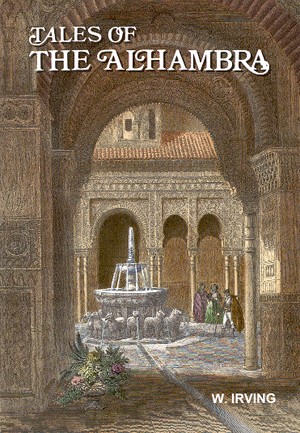Above all, travel impressions are context driven. Our eyes take in visual information, but the mind filters what we see through preexisting content, overlooking details that hold no meaning for us. At the same time memories enhance our perceptions by pulling in associations and emotions from the past, whether relevant or random.
With this in mind, when planning a trip with children and grandchildren, I make an effort to shape their context and update my own. We use tools such as Google or You Tube to share movies, books, videos, music, art, history and legends about the places we will see. And yet I know from my own experience that random links from their past will also color their perspective. Say Switzerland, I think William Tell. Say Alhambra, I think Authors.

My father loved card games. We used to play Authors, an old game which no doubt he played as a child. There are many variations now, but the original deck had cards with pictures of eleven well-known authors. Each was pictured on four cards naming a famous work and the object was to collect all four works from as many authors as possible.
Somehow the titles themselves created images in my childhood’s mind long before I knew that they represented actual written works. Then one December Dad read from A Christmas Carol and I exclaimed with a sense of discovery, “Oh! That’s a book by an AUTHOR!” Once I asked him about The Alhambra by Washington Irving and he told me it was a book about a beautiful castle in Granada, Spain and we would go there some day. The Alhambra was forever after associated in my mind with castles in Spain and playing Authors with Dad.

Ali Qapu. Isfahan, 1956. 
Chehel Satoun. Isfahan, 1956.
Dad and I never went to the Alhambra together, but we did go to Isfahan and Shiraz in 1956. We saw the Meidan Emam, a large square surrounded by magnificent buildings, including the Ali Qapu pavilion and the Royal Mosque with its magnificent blue dome, and we saw the Chehel Sotoun Palace facing a garden with pool of water that reflects its 20 pillars. We admired the arched entries, slender columns, and the geometric designs of brightly colored tiles.
Not long ago I finally did go with my son to see the Alhambra in Granada and all those memories came back at the sight of superb buildings and gardens, familiar, symmetrical, and lovely.

A courtyard in the Alhambra. Granada, 2018.

Who knows what our travelling companions saw that day. Were the graceful archways, geometric tiles, and enclosed gardens new or familiar to them? Did some, like me, reflect on Isfahan and card games?

The Meidan Emam, looking toward the Royal Mosque. Isfahan, 1956. 
A miniature showing a 17th-century polo game in the same square.
Happily, both the Meidan Emam https://whc.unesco.org/en/list/115 and the Alhambra are preserved for the future as UNESCO World Heritage sites, recognized and protected for their unique contribution to world culture. Both are impressive outdoor spaces which include unique historical buildings. The Chehel Sotoun Palace itself is also a World Heritage site included in a group of the Persian gardens, known for their beauty and symmetry. https://whc.unesco.org/en/list/1372 The Alhambra World Heritage site is grouped with the Generalife, a residence of the emirs, and the Moorish residential town of Alabyzin. https://whc.unesco.org/en/list/314 Rather than trying to describe here the history and unique features of these sites in terms of architecture, irrigation, and city planning, I urge you to check out the descriptions on the UNESCO web site.
After walking through the extensive grounds of the Alhambra, I needed a rest, so as my son climbed the hill to the Generalife, I sat down to read Washington Irving’s Tales of the Alhambra that I found in the gift shop. Born in the eighteenth century, Irving wrote stories in a age from a context both historical and personal which is very different from our own. I have to admit that the romantic style of this book, written in 1832, did not draw me in, but I did read a little here and there and I’m sure that the book as well as the card game served to introduce the name Alhambra to many curious travelers through the years. What I did learn was that Washington Irving was appointed the American ambassador to Spain and his travels there included a sojourn in the Alhambra itself which inspired the book. Today more people might know him as the author of The Legend of Sleepy Hollow than as an “author” in a card game, but for me the name “Alhambra” will always be associated with childhood travels and card games with my dad.



Great post! I hope I can see the Alhambra some day! And play Authors!
Thank you, Gail. Nicely done piece.
Sent from my iPhone
>
Thank you, Ahdoja! I’m so glad you liked it!